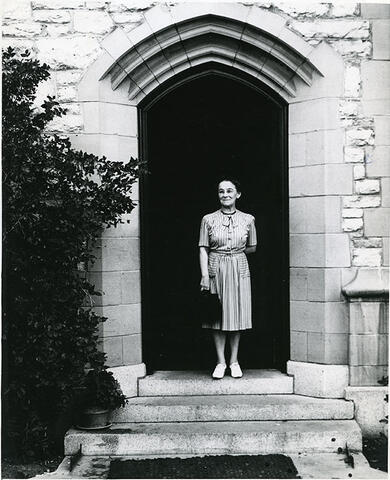
Área de título y declaración de responsabilidad
Título apropiado
Bertha G. Oxner
Tipo general de material
- Graphic material
Título paralelo
Otra información de título
Título declaración de responsabilidad
Título notas
Nivel de descripción
Item
Institución archivística
Código de referencia
Área de edición
Declaración de edición
Declaración de responsabilidad de edición
Área de detalles específicos de la clase de material
Mención de la escala (cartográfica)
Mención de proyección (cartográfica)
Mención de coordenadas (cartográfica)
Mención de la escala (arquitectónica)
Jurisdicción de emisión y denominación (filatélico)
Área de fechas de creación
Fecha(s)
-
[between 1925 and 1949] (Criação)
Área de descripción física
Descripción física
1 photograph : b&w ; 20.5 x 25.5 cm
Área de series editoriales
Título apropiado de las series del editor
Títulos paralelos de serie editorial
Otra información de título de las series editoriales
Declaración de responsabilidad relativa a las series editoriales
Numeración dentro de la serie editorial
Nota en las series editoriales
Área de descripción del archivo
Nombre del productor
Historial de custodia
Alcance y contenido
Bertha Oxner, director of Women's Work and professor in the College of Agriculture, standing in a doorway of a campus building.
Bio/Historical Note: Bertha Georgina Oxner was small of stature but the organizational skills she brought to Saskatchewan loomed large in the difficult years of the 1930s and 1940s. Born in 1885 at Chester Basin, Nova Scotia, she obtained her schooling at Chester Basin, Chester, and Truro and taught school for a period before moving to Saskatchewan in 1908. Oxner taught school in Saskatoon, Brock and Saltcoats. At Brock she is remembered for having instituted hot school lunches which proved valuable for the children of homesteaders in the 1920s. She also set up a basketball league. After serving as principal at Saltcoats, Saskatchewan, Oxner left the school teaching profession to study household science at the University of Saskatchewan, obtaining a BA. At Chicago University she earned an MA and did post-graduate work in textiles and clothing. In 1925 Oxner came to the University of Saskatchewan as assistant professor in household science. With Ethel B. Rutter she helped plan the Bachelor of Household degree, which resulted in a School of Household Science at the university in 1928. In 1930 Oxner was appointed director of women’s extension work. In this role she introduced a broad educational program for rural women and members of Saskatchewan Homemakers' Clubs. Through Oxner’s guidance women were encouraged to expand their knowledge of agriculture, arts and letters, family law, public health and international affairs. Through a weekly column in The Western Producer she passed along program ideas and advice to the 350 Homemakers' Clubs. Oxner began short courses for rural girls in 1933 and helped launch Homecraft Clubs in 1938. In the first year, 124 Homecraft Clubs were organized. Oxner helped start Farm Women’s Week on the university campus. She organized the first Homemakers' Club on a First Nation and these spread across the province and initiated short courses for Métis women. Oxner served on the boards of the Canadian Association for Adult Education, the National Vocational Training advisory council, Canadian Association of Consumers, National Farm Radio Forum, Canadian Home Economics Association, Saskatchewan Physical Fitness Council, Saskatchewan Technical Education Committee and the Saskatchewan Farm Housing Committee. Oxner retired in 1949 and moved back to Chester, Nova Scotia. Oxner died in Chester on 7 December 1960 and is buried there.
Área de notas
Condiciones físicas
Origen del ingreso
Arreglo
Idioma del material
Escritura del material
Ubicación de los originales
Disponibilidad de otros formatos
Restricciones de acceso
Condiciones de uso, reproducción, y publicación
Other terms: The researcher assumes responsibility regarding questions of copyright that may arise in the use of any images.

